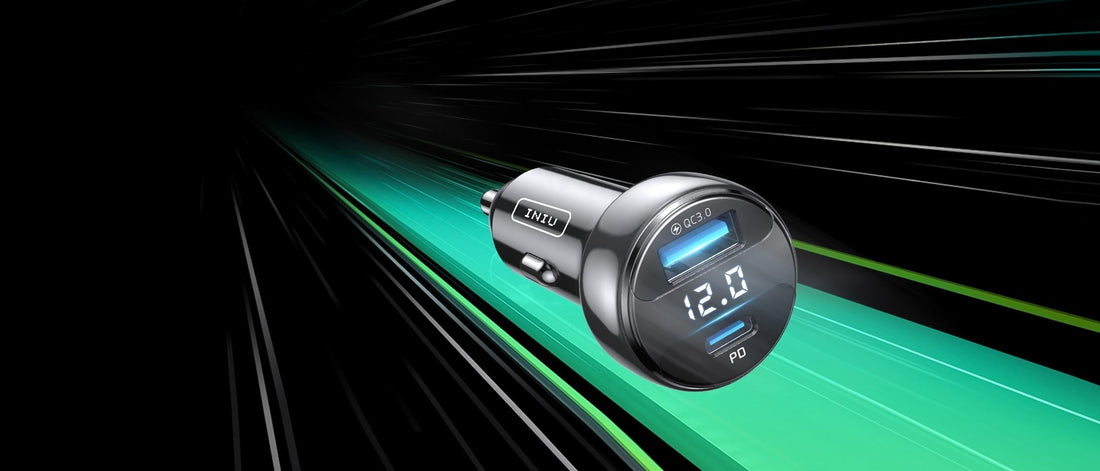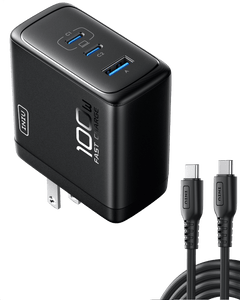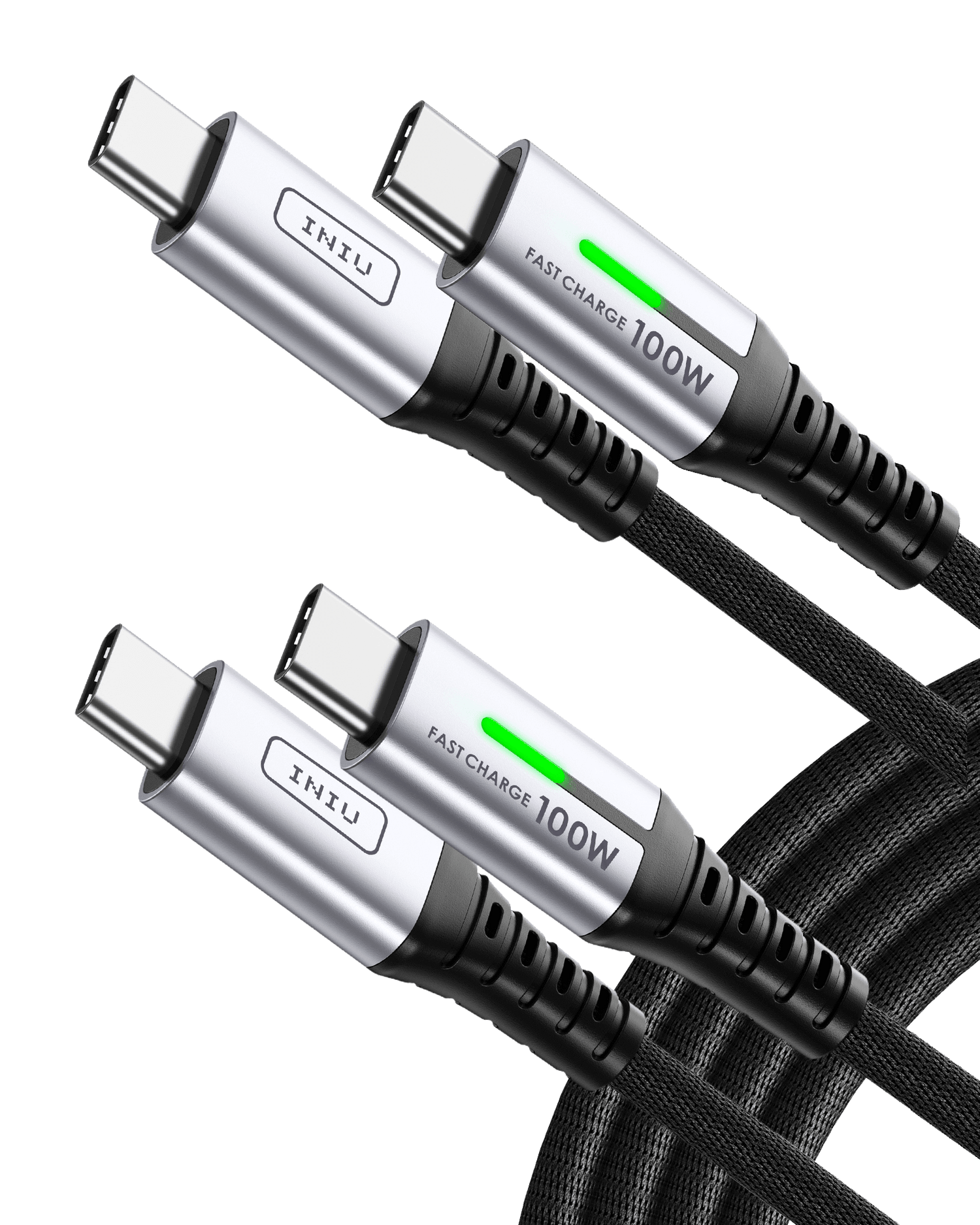
How to Safely Charge Your Phone in the Car: Do's and Don'ts Guide
Your smartphone is a vital tool for navigation and communication during any drive. Keeping it charged is important, but doing it safely is critical. A proper charging setup protects your phone's battery, your car's electrical system, and your peace of mind. This blog offers a clear path to reliable in-car power.
How to Charge Your Smartphone in the Car
Powering your phone on the road involves more than just plugging it in. Vehicles offer several distinct methods, from built-in ports to advanced wireless mounts. Understanding each option's capabilities and limitations is the first step toward a better charging experience.
Built-in Vehicle USB Ports
Most modern vehicles come equipped with factory-installed USB ports. These ports are convenient because they do not require any extra adapters. You can use the standard charging cable that came with your phone. However, these ports often have a significant drawback. They typically provide very low power, often around 5 watts.
This low output means charging is extremely slow. In many cases, if you are using your phone for power-intensive tasks like GPS navigation or music streaming, the port cannot supply power fast enough. Consequently, your phone's battery level might actually decrease even while it is connected. These built-in ports are best for simply maintaining a charge, not for quickly replenishing a low battery.
12V Socket Adapters (The Cigarette Lighter Charger)
The most common and effective way to charge a phone in a car is with an adapter plugged into the 12V power outlet, also known as the cigarette lighter socket. A usb car charger of this type converts the car's 12-volt supply into the 5 volts your phone needs, but at a much higher amperage than built-in ports. A good adapter can deliver 2.4 amps or more, resulting in significantly faster charging speeds.
These adapters come in many forms. Some have a single port, while others offer multiple ports to charge several devices at once. You can find them with traditional USB-A ports, modern USB-C ports, or a combination of both. A multi-port car phone charger is great for families, but remember that the total power output is shared across all ports. Charging multiple devices simultaneously may slow down the speed for each one.
The Rise of the Wireless Car Charger Mount

A wireless car charger mount offers a modern, cable-free solution that enhances both convenience and safety. These devices hold your phone for easy viewing while charging it at the same time. They typically mount to the dashboard, windshield, or an air vent. The technology relies on the Qi wireless charging standard, which is compatible with most new smartphones, and for iPhone 12+ users, it offers even greater convenience with magnetic alignment, providing a seamless experience.
The most advanced versions use magnets for alignment. A magnetic mount allows you to attach your phone with one hand, often without looking away from the road. This action reduces driver distraction. High-quality mounts feature powerful N52 neodymium magnets that create a secure grip, holding the phone steady even on rough roads. Furthermore, the magnetic connection helps perfectly align the phone's charging coil with the charger's coil. This perfect alignment improves charging efficiency and reduces the amount of heat generated, which is better for your phone's long-term battery health.
The Golden Rules: Essential "Do's" for Safe Car Charging
Keeping your devices powered up should not come at the cost of safety. Adhering to a few fundamental rules can protect your phone, your car, and yourself from potential harm. These practices focus on using certified gear and handling it correctly.
Do Use High-Quality, Certified Equipment
The single most important rule is to invest in quality accessories. Look for chargers that have safety certifications like UL, CE, or FCC on the packaging. These marks indicate the product has passed independent tests for safety against hazards like overheating, power surges, and short circuits. Cheap, uncertified chargers can supply "dirty power," which is an unstable voltage that can slowly damage your phone's sensitive internal components.
For Apple device users, it is highly recommended to use cables with an Emark chip. The Emark chip allows for faster charging by supporting higher power delivery and better communication between the charger and device. This ensures efficient and safe power transfer, preventing overheating and extending the lifespan of your battery.
Do Inspect Your Cables Regularly
Your charging cable is just as important as the charger itself. Before you plug it in, take a moment to inspect its condition. Look for any signs of damage, such as fraying, cracks, or exposed wires. A damaged cable is not just unreliable; it is a serious safety risk. Exposed wires can cause a short circuit, which could damage your phone or even start an electrical fire. If you find any damage, replace the cable immediately.
Do Keep Your Phone Cool
Heat is a major enemy of your phone's lithium-ion battery. The charging process naturally generates some heat. When you combine that with the high temperatures inside a car on a sunny day, it can become a problem. Excessive heat accelerates the degradation of your phone's battery, permanently reducing its ability to hold a charge.
To prevent this, avoid placing your charging phone in direct sunlight, such as on the dashboard. Also, keep it away from hot air vents in the winter. Your phone has built-in protections that will slow or stop charging if it gets too hot, so keeping it cool allows it to charge at its optimal speed.
Do Unplug When the Engine is Off
When your car's engine is off, the alternator is not running to recharge the battery. Any device you have plugged in draws power directly from the car battery. While charging a single phone for a few minutes is unlikely to drain a healthy battery, it is a risk. The risk is greater if your car battery is old or already in poor condition.
Some cars have 12V sockets that are "always on," meaning they supply power even when the ignition is off. If you leave a charger plugged into one of these sockets overnight, you could wake up to a dead car battery. The safest habit is to unplug your charger when you are finished using it or when you turn the engine off for an extended period.
3 Common Pitfalls: Critical "Don'ts" to Avoid
While knowing what to do is important, knowing what not to do can be just as crucial. Avoiding a few common mistakes will prevent damage to your devices and protect your car’s electrical system from unnecessary strain and potential failure.
Don't Use Cheap, Uncertified Chargers
It can be tempting to grab the cheapest car charger you can find, but this is a mistake. Low-quality, uncertified chargers often lack critical safety features like over-current and short-circuit protection. Without these safeguards, the charger can send an unregulated or excessive amount of power to your phone. At best, this will degrade your phone's battery over time. At worst, it can permanently damage the charging port or the phone's main circuit board, which is a very expensive repair. A faulty charger can also draw too much current from the car, blowing the fuse for that power socket.
Don't Ignore Your Car's Battery Health
Your car's battery is a component with a finite lifespan, typically lasting three to five years. As it ages, its ability to hold a full charge diminishes. Pay attention to signs of a weak battery. If you have recently needed a jump-start or if your car struggles to start, your battery is likely failing. In this condition, you should not charge your phone with the engine off. The small amount of power drawn by the phone charger could be enough to drain the already weak battery completely, leaving you stranded.
Don't Use a Low-Power Port for High-Demand Tasks
Do not expect your car's built-in, low-power USB port to keep up if you are a heavy user. If you are running GPS navigation while streaming music and taking calls, your phone is consuming a lot of energy. A standard 5-watt USB port cannot supply enough power to match that consumption. As a result, your phone's battery will continue to drain, even though it is plugged in. This can be frustrating and dangerous if your phone shuts down when you are relying on it for directions. For these situations, a powerful 12V adapter is necessary.

How to Choose the Perfect Car Charger for Your Needs
Selecting the right car charger can feel overwhelming with all the technical terms. However, the process is simple if you focus on three key areas: the power you need, the ports you require, and the features that match your devices.
Assess Your Power Needs: Watts, Amps, and Fast Charging
The speed of your charge is determined by power, which is measured in watts (W) and amps (A). For fast charging, you need a charger that delivers high power. Look for a charger that can provide at least 18W from a single port.
To get the benefit of these higher speeds, both your phone and your charger must support the same fast-charging protocol. The most common standards are Power Delivery (PD) and Qualcomm Quick Charge (QC). PD is the modern standard used by most new smartphones and is often delivered through a USB-C port. QC is common in many Android devices. A charger with a USB-C PD port is a great choice because it is versatile and will work with most new devices.
Determine How Many Ports You Need
Think about how many devices you and your passengers need to charge at once.
- For a single user, a charger with one or two ports is usually sufficient. A dual-port charger gives you the flexibility to charge a secondary device like headphones or a smartwatch.
- For families or power users, a multi-port charger with two or more ports is a better option. When choosing a multi-port charger, pay attention to the total power output. A charger might advertise a high total wattage, but that power is divided among the ports. For fast charging two phones at once, look for a charger with at least 40W of total output.
Match the Charger to Your Lifestyle
Different drivers have different needs. Consider which profile fits you best:
- The Daily Commuter: You need a quick, reliable power boost on your way to and from work. A compact, dual-port usb car charger with at least one USB-C PD port is an excellent all-around choice.
- The Road Tripper or Family: You have multiple people with multiple devices, all needing power over a long journey. A multi-port charging hub is ideal. Some models even come with an extension cord so passengers in the back seat can have easy access.
- The Tech Minimalist: You value a clean, uncluttered car interior. The perfect solution is a wireless car charger mount. A magnetic model offers the ultimate convenience, letting you mount and charge your phone with a simple, one-handed motion.
Making the right choice ensures your car charger becomes an indispensable part of your mobile lifestyle.
Conclusion: Power Up Your Drive the Smart Way
Ultimately, achieving a safe and efficient charge in your car is not a matter of chance. It is the result of conscious choices. Focus on using certified, high-quality equipment. Respect the limitations of your phone and your car's electrical system. A few extra dollars for a quality charger is a small price for the safety and reliability it provides on every trip.
FAQs about Charging Your Phone in the Car
Q1: How long can I charge my phone with the car off?
A: It is generally safe to charge for about 15-30 minutes with a healthy car battery. However, if your battery is more than a few years old or shows signs of weakness, you should avoid charging with the engine off altogether to prevent it from draining completely.
Q2: Why does my phone charge so slowly in my car?
A: You are most likely using your car's built-in USB port, which provides very little power. For much faster charging, use a high-quality adapter that plugs into the car's 12V power socket (cigarette lighter).
Q3: Is a wireless car charger better than a wired one?
A: It depends on your priorities. A wired car phone charger will almost always charge faster and more efficiently. A wireless charger offers superior convenience, reduces cable clutter, and can be safer to use while driving since it often allows for one-handed operation.
Q4: Do I really need an MFi-certified cable for my Apple device?
A: Yes. MFi-certified cables contain a special chip that regulates the flow of electricity, protecting your device from overcharging and electrical damage. These cables ensure safe, efficient charging and prevent long-term damage to your phone’s battery or charging port. In addition, cables with Emark certification can support faster charging by enabling higher power delivery, offering an even more efficient charging experience for devices that support it. Using non-certified cables can lead to error messages, slower charging speeds, and potential harm to your device over time.




